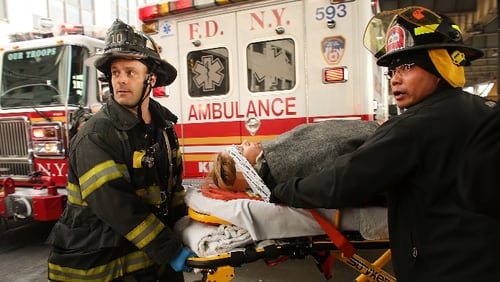Last year, more than 146,000 people in the U.S. died from preventable causes, such as car accidents, drug overdoses among several others.
And according to a new report from the National Safety Council, states just aren't doing enough to protect their residents or to improve safety on the roads, in the community and home or in the workplace.
Analysts determined state-by-state grades for road, home, community and workplace safety and found no state was deserving of an overall “A” grade.
» RELATED: Georgia scores a ‘D’ in avoiding preventable deaths, new safety report says
Eleven states (Arizona, Arkansas, Idaho, Kansas, Montana, Oklahoma, South Dakota, South Carolina, Mississippi, Missouri and Wyoming) received failing grades.
Using data from multiple sources, including the Insurance Institute for Highway Safety, Bureau of Labor Statistics, U.S. Census and more, of all the estimated preventable deaths in 2016, the council found 40,200 fatalities occurred on the roads; 121,904 in homes and communities and 4,836 in workplaces.
“We are in the midst of the deadliest spike in roadway fatalities in 50 years,” report writers wrote. And according to 2015 data, road fatalities are also the leading cause of death in 16 states.
» RELATED: America’s deadliest interstate is in Georgia, study says
Accidents involving drunk driving account for about one-third of all roadway deaths, according to the report.
In 2015, the U.S. also saw the highest number of workplace fatalities since 2008.
Top five causes of preventable death
1. Poisonings: 44,970 fatalities in 2015
The “major culprit” behind the sharp increase in the nation’s drug poisonings is America’s opioid crisis, which takes approximately 60 lives every day.
Drug poisonings include deaths from drugs, medicines, other solid and liquid substances, gases and vapors.
NSC recommendations for states: prescriber education and guidelines, patient education, overdose prevention programs, access to treatment.
» RELATED: Governor Deal signs Opioid abuse legislation to fight illness, save lives
2. Firearms: 35,486 fatalities in 2015
Accidental gun deaths are relatively low, but firearms are involved in approximately 35,000 intentional deaths and 80,000 injuries.
In addition, half of all suicides involve guns -- and nearly two-thirds of all U.S. gun deaths are due to suicide.
NSC recommendations for states: gun safety laws and programs, background checks on gun buyers, training for gun retailers to better identify customers at risk.
» RELATED: These are the safest cities in Georgia
3. Older adult falls: 28,400 fatalities in 2015
Adults 65 and older are experiencing falls now more than ever. In fact, older adult falls have increased 168 percent since 1999, according to the report.
These falls, often caused by medication side effects, muscle weakness or cluttered/poorly lit areas, largely contribute to traumatic brain injury and are the leading cause of death in 10 states.
NSC recommendations for states: fall prevention strategies in older adult communities, state coalitions to assist in prevention, pharmacist prescription modification.
» RELATED: America’s worst truck bottleneck is in Atlanta, study says
4. Vulnerable road users: 11,324 fatalities in 2015
Pedestrians, motorcyclists and bicyclists are at greater risk than vehicle drivers and passengers during car crashes.
In fact, between 2004-2013, motorcycle-related fatalities increased by 16 percent and bicycle-related deaths by 12 percent.
In 2015, 5,376 pedestrians died after being struck by vehicles.
NSC recommendations for states: motorcycle and bicycle helmet laws, laws requiring drivers to stop for pedestrians.
5. Alcohol impaired driving: 10,265 fatalities in 2015
Drunken driving (.08 BAC) accounts for about 10,000 traffic fatalities each year.
“Impairment truly begins with the first drink,” report authors wrote.
NSC recommendations for states: a state sobriety checkpoint program, ban on open containers in the car, 90-plus day license revocation for drivers above the .08 BAC or drivers who refuse the test.
About the Author







